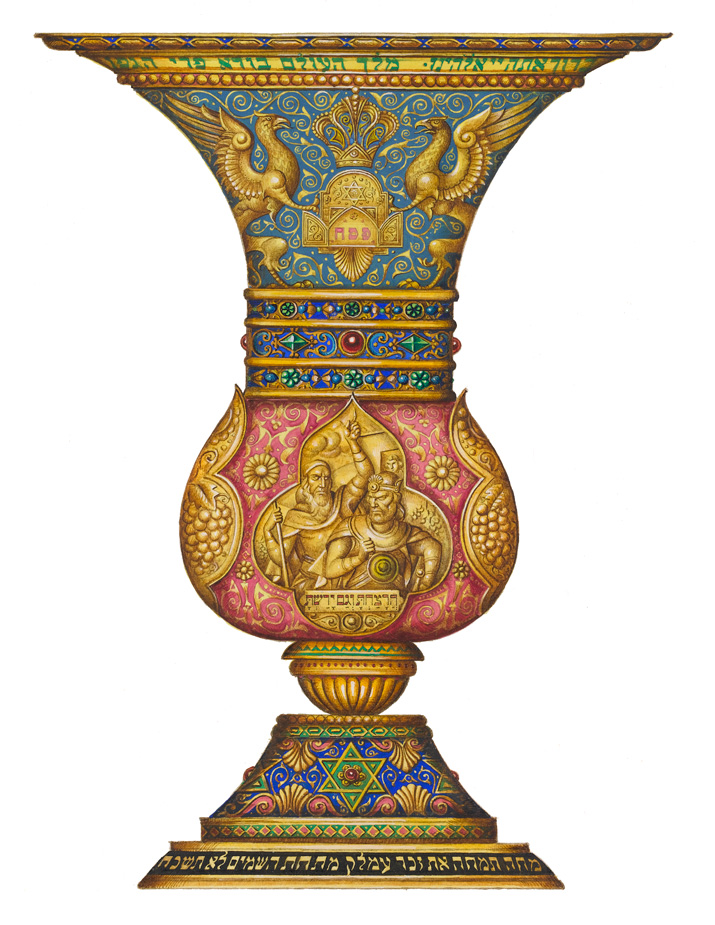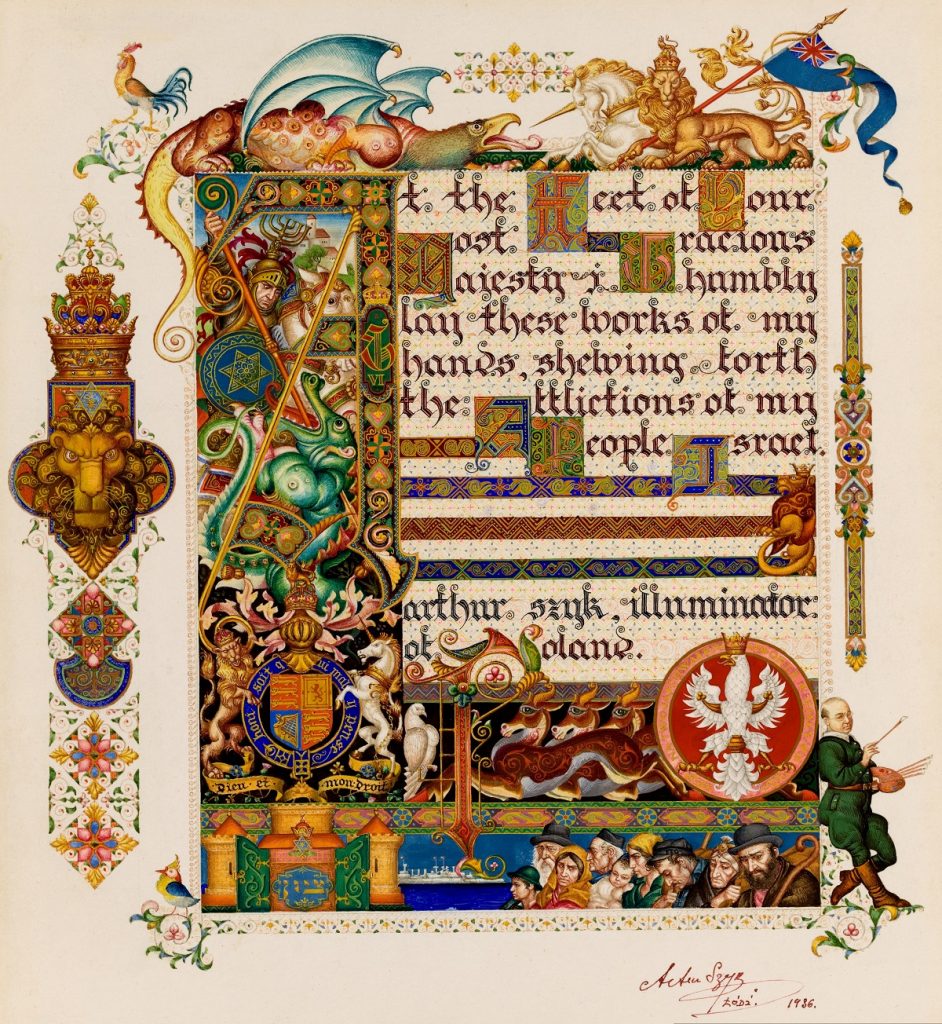There are plenty of Passover Haggadot to choose from. Every Jewish home in Israel has different and unusual Haggadot: fancy Haggadot, inexpensive Haggadot purchased at the last minute at a ‘dollar’ store, Haggadot for children, personally designed Haggadot, and Haggadot published by the kibbutz movement. But there are few Haggadot which are as beautiful as the Szyk Haggadah. That splendid Haggadah was created by the Polish-Jewish artist, Arthur Szyk, in the 1930’s.
Arthur Szyk, who was a renowned illustrator, painter and caricaturist, was one of the greatest Jewish artists in his generation. Apart from being born a Jew, he was one of those artists whose works were unmistakably Jewish. As the eulogy written for him in the magazine of the Herut movement said: “Szyk revived ancient Jewish art – the art of the letter, the art of the scribes, and by doing so he made a name for himself.” Among other things, he illustrated books of the Bible, the Book of Esther and, of course, the Passover Haggadah.
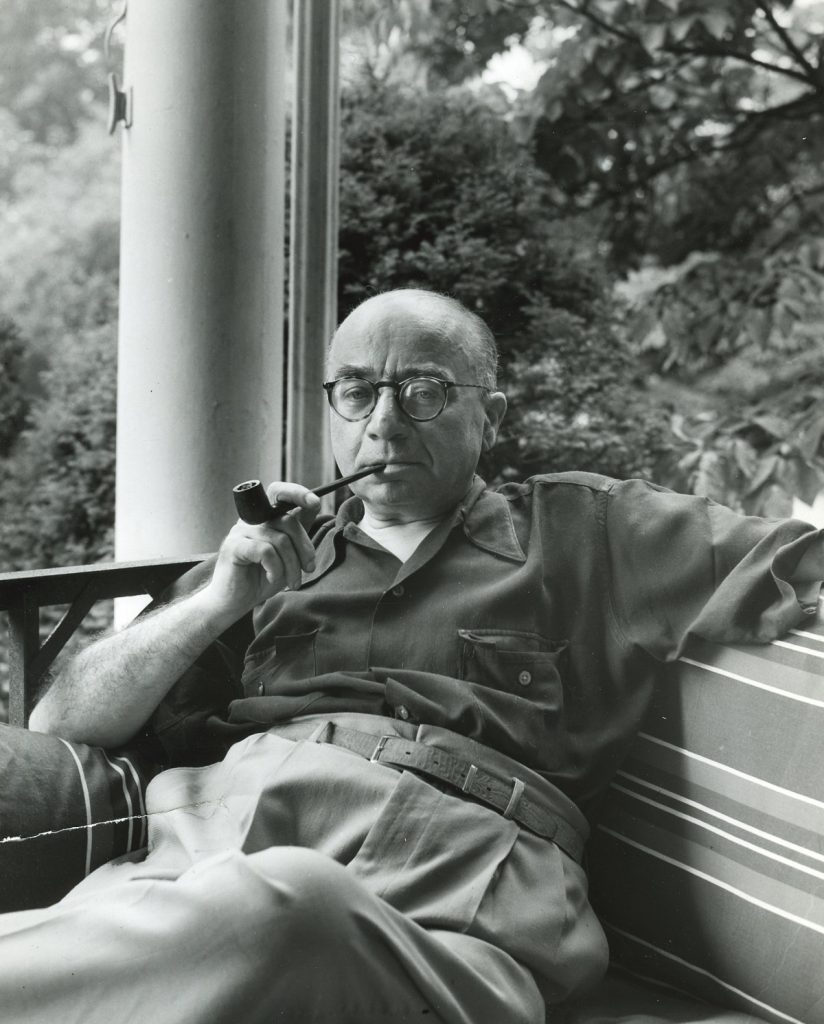
Szyk was born in 1894 in Lodz, Poland, which at the time was under Russian rule. He studied art both in Poland and in Paris. In his youth, he visited pre-State Israel as a member of a delegation of young Jewish artists from Poland. In the First World War, he served in the Russian army. Throughout his career, Szyk created countless important and famous works of art, which combined traditional themes with contemporary ones, as well as colorful and magnificent beauty with political messages and biting satire. He produced his most memorable work, the Szyk Haggadah, after returning to Poland from abroad in the middle of the 1930’s.
In his Haggadah, Szyk created the calligraphy of the Hebrew text by hand. He copied and illustrated the 48 pages of the Haggadah in gouache and watercolor, with each illustration and decoration meticulously crafted. From a stylistic perspective, Szyk adopted age-old techniques that were used to copy and illustrate holy texts in ancient times and in the Middle Ages. But into that traditional substrate he injected contemporary themes that were a protest against the period he lived in. Szyk chose to compare the Biblical story of the oppression of the Jews in Egypt with the oppression of the Jews by the Nazis. He was not the first to incorporate contemporary themes in a Passover Haggadah, but he chose to put an especially explosive issue on the seder table.
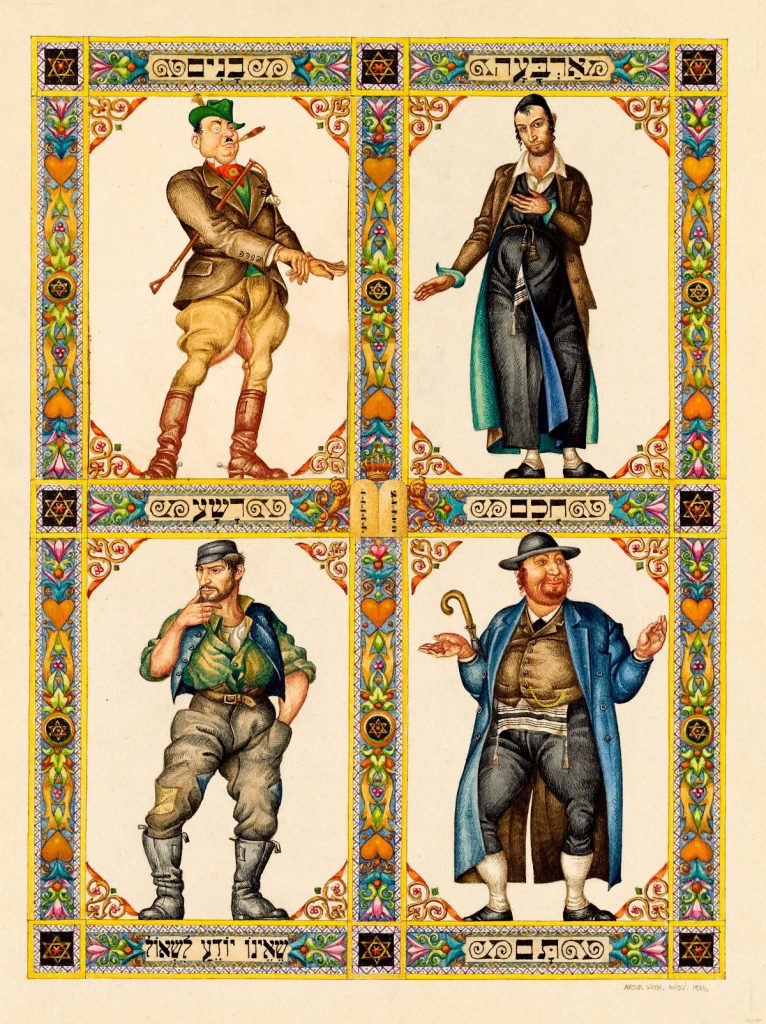
After completing his Haggadah in Poland in 1936, Szyk looked for a publisher in Europe. The unequivocal anti-Nazi themes that it included, such as the parallel between Hitler and the Pharaoh, made it difficult for him to find a publisher and he had to tone them down. He removed the swastikas from the arms of the Egyptians who brutalized the Jewish slaves, but left the Hitler-like moustache on the image of the wicked son from the parable of the Four Sons.
The British Jewish historian, Cecil Roth, who was also a fierce critic of the Nazis, edited Szyk’s Haggadah, translated it into English, and added an introduction to it, in which, among other things, he explained one of the differences between the Szyk Haggadah and other Haggadot. Whereas in most other Haggadot the text and the illustration appeared alongside one another, in the Szyk Haggadah the calligraphy, the illustration, the decoration and the narrative comprise a single harmonious unit.
In the end, a new publishing house named Beaconsfield Press was set up in London for the express purpose of publishing Szyk’s Haggadah. The artist moved to London to oversee the complex process, and the first Szyk Haggadah was published in 1940, with the English translation of every page of the Hebrew text printed on the page next to it. A total of 250 copies were printed in the original limited edition, which sold for $500 per copy – which was a small fortune in those days.
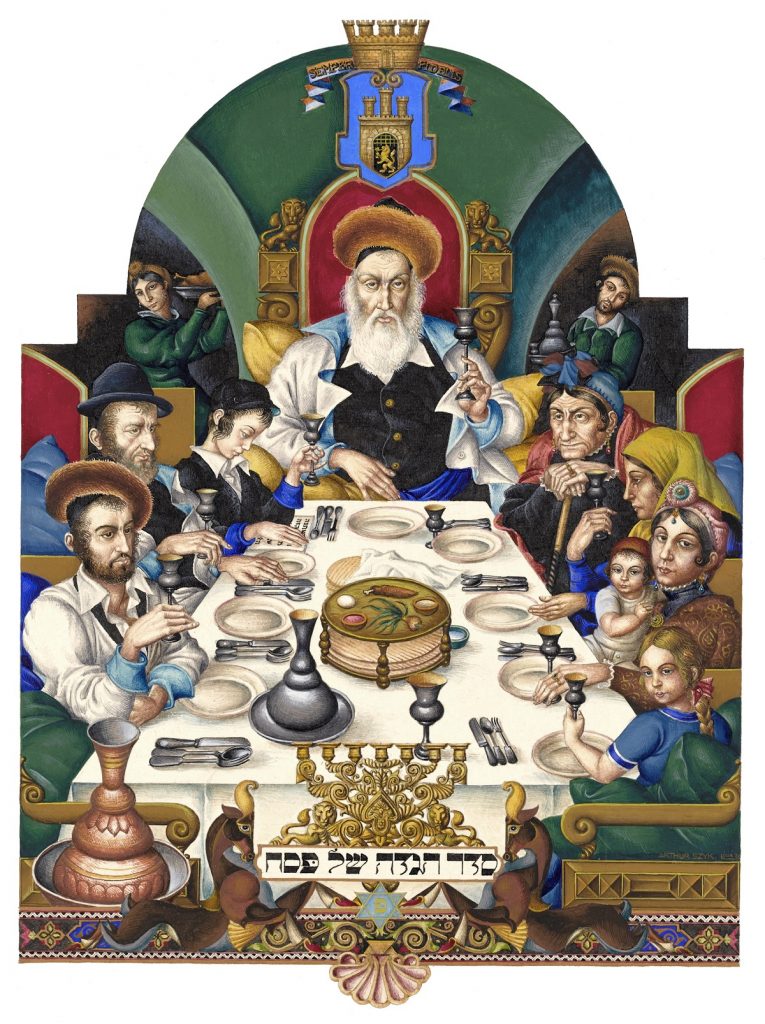
In England, the Szyk Haggadah created an immediate buzz. The Literary Supplement of the Times of London called it one of the most beautiful books every produced by the hand of man. The Haggadah was dedicated to King George VI, who was the monarch of the United Kingdom at the time and opposed the Nazis. Some even say that he had a special place in his heart for the Szyk Haggadah.
At the end of 1940, Szyk emigrated to the United States and settled in the city of New Canaan in Connecticut, where he continued to pursue his artistic career. At the same time that his mother and siblings were being killed in the Holocaust, Szyk was disseminating his anti-Nazi ideas far from the European continent. From his place of residence in the United States during World War II, he published books and a wealth of caricatures that ridiculed the Nazis and the Axis countries – caricatures that were highly popular in America. After the war ended, Szyk became an ardent Zionist and, as expected, expressed that ideology in his art as well. He illustrated the State of Israel’s Declaration of Independence and the festival postal stamps issued in 1950. But he continued to reside in Connecticut for the remainder of his life. Some attribute his untimely death at the age of 57 to the investigation he was subjected to during the McCarthy period, when he was suspected, like many others, of being a communist sympathizer.
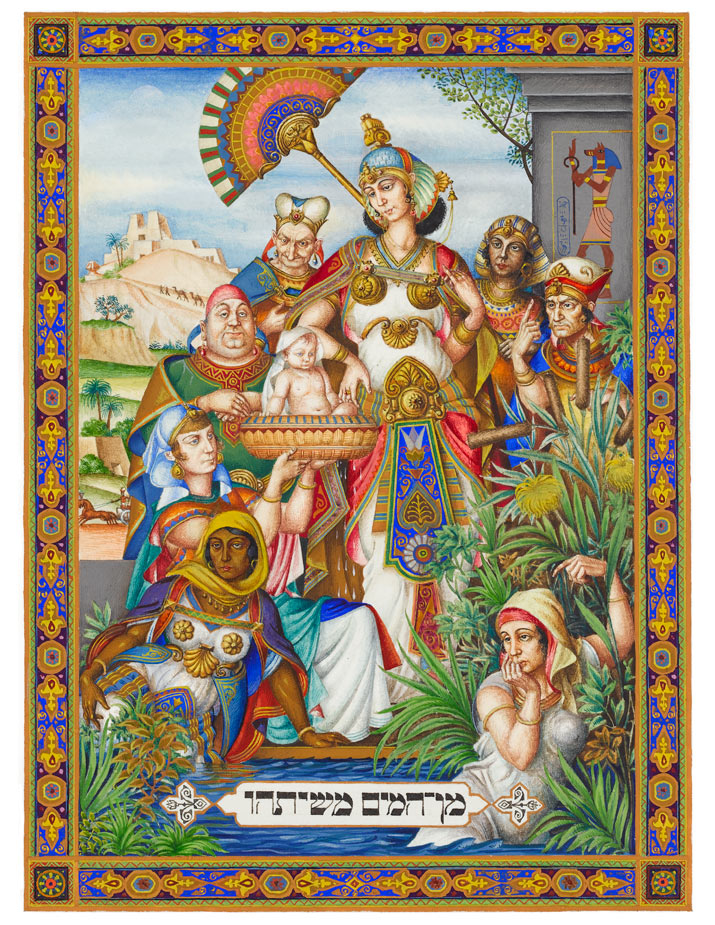
In 1956 – five years after the artist’s death – the first Israeli edition of the Szyk Haggadah was jointly published by two publishing houses, Masada and Magen. The daily newspaper, HaTzofeh, covered the press conference held at the Press Club in Tel Aviv to mark the occasion. Speakers at the event included the late professor, Yehoshua Gutmann, and the late Knesset Member, Eliyahu-Moshe Ganchovsky. The article in HaTzofeh applauded the Hebrew edition, which used the same printing house in Ramat Gan where the Hebrew Encyclopedia had been printed. The author noted that “they did an exceptional job of preserving the beauty and elegance of the original London edition. Its binding is exquisite and made of special velvet, all of which lies in an opulent box adorned with pure gold that symbolizes Elijah’s cup.” Since then, additional Hebrew editions of the Szyk Haggadah have been published, including in countries other than Israel, and they continue to be reprinted over and over again.
The credit for the recent renaissance experienced by Arthur Szyk’s art should be attributed to the American Jewish art dealer and former rabbi, Irvin Ungar, who is considered the foremost expert on Syzk’s art. A new edition of his Haggadah that Ungar edited was published in 2008, which features a revised English text and commentary by the late theologian and rabbi, Byron Sherwin. That exclusive edition was published in a number of formats, including a ‘deluxe’ edition that cost $8,000, and a ‘premium’ edition that cost $18,000. But that’s nothing compared to the huge sums that Judaica collectors have been willing to pay for a copy of the book’s first edition.
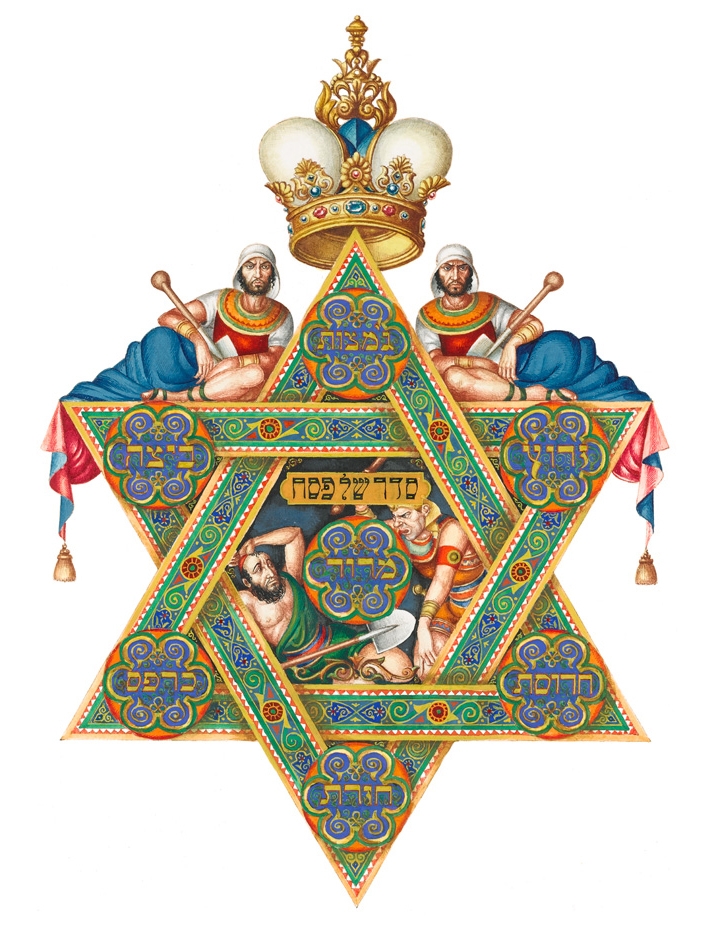
Original copies of the Szyk Haggadah can be found today on the websites of Sotheby’s and Christie’s, where a first edition copy is typically appraised at tens of thousands of dollars. In 2006, for example, Christie’s sold a copy printed on vellum and signed by Arthur Szyk and Cecil Roth for $54,000 (which was one of the 125 numbered copies of the limited British Empire Edition). In 2015, the same auction house sold a vellum copy from that limited edition, but it was not signed because it belonged to Szyk himself. That copy sold for $22,500.
But, of course, you don’t have to dip into your savings to take delight in Arthur Szyk’s moving and beautiful Haggadah on seder night. Nowadays, you can find more modest editions of that Haggadah at truly affordable prices. Happy Holiday!
